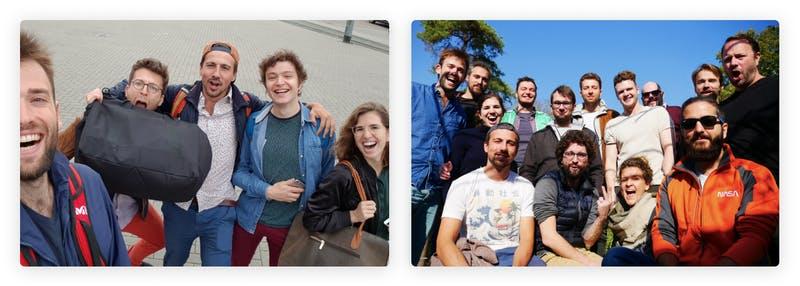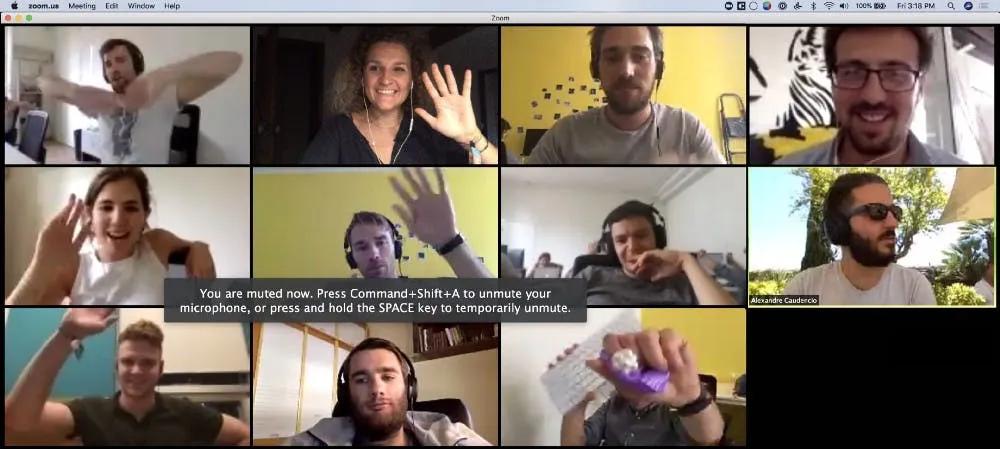Lessons learned in growing Slite from 1 to 14

Probably the most exciting — and most difficult — aspect of building a startup is building the team.
It’s exciting because hiring means growth — you bring in talented people who’ll make things move faster. But it’s difficult since for most founders hiring is a whole new skillset. Most of us start companies because we want to build an incredible product, and don’t think a lot about the team at first. But the team we build is the key to success, and it’s also most of the fun.
Sam Altman’s tweeted this lately:
Well, iteration isn’t restricted to your product. Asana, for instance, treats their culture as a product.
And two years into Slite, I can confidently say we’re iterating on growing our team just as much as we are on our product. Finding and hiring the right people is not something we knew how to do at first. We’ve had to test, make mistakes, and learn along the way.
I’m going to share all of that in this post. How we approach hiring, what we learned in getting from 1 to 14, and the values that have emerged as a result (so far).
14 people isn’t all that many, right?
There’s been plenty written about going from a few to 50 employees, 100 to 500, and so on. These are the big milestones founders focus on, and the growth in between doesn’t feel as significant.
But building a company with 14 people the right way is a huge achievement! And we’ve already learned so much that the road forward is far clearer.
The point of this post is to be helpful and transparent. And since no startup scales or grows in exactly the same way, I won’t be giving “5 keys to startup hiring.” Instead, I’ll outline our main milestones and the takeaways of each.
1–5: Finding the essentials
Whether you’re bootstrapping or have just raised a pre-seed round, the first hires will always be the people you deem most necessary and people ready to roll up their sleeves. From the first business plan, it should be pretty clear the kinds of people you need to get the company off the ground.
For a product company like Slite, that meant figuring out product and tech first, finding first users then. More often than not, you need people with multidisciplinary skills who can just make things happen. Some that can implement some backend infrastructure, but also a rudimentary website or mobile app. And others that can go do user interviews, pitch the product as well as you, think about the acquisition strategy and so on.
There will be time to specialise in the future. For now, it’s about making stuff work.
You’re probably going to hire people that look like you. They’ll be bootstrappers themselves, willing to do what’s needed, and involved in most aspects of the company.

A funny example of this is how Arnaud, our second ever employee, actually asked to come and work with us for a day in order for us to mutually assess each other. He basically led his own hiring process since we had none in place!
Soon, we’d be looking for other things: specific skills, industry experience, a management background. But first, we just needed doers.
5–8: Adding new (and different) talent
Once you move outside the core team, things can get a little murkier. You start to hire the first roles in jobs you’re not skilled at yourself.
For us it was our first Product Designer. We knew we needed these skills, but weren’t completely sure what they would look like or how to assess them.
To this point, we relied heavily on culture fit and thought that all we needed to hire the first team members was to have people aligned with Slite’s vision . Here’s where we learned our first hard lesson: even at this early stage, you need a clear understanding of the job you’re hiring for, and a real onboarding process.
We didn’t get this right the first time around. In fact, we had to part ways with two talented people a few weeks after hiring them. It was without a doubt a clear reflection of our flawed hiring and onboarding processes.
Our key mistakes included:
- Rushing our hiring processes
we skipped over important recruitment steps to close positions faster - Assuming that hiring more people automatically means a more productive team,
and ignoring the effort that onboarding takes on all parties - Hiring for jobs without clear job scorecards
we didn’t actually know what to expect from the roles, so our hiring was immediately flawed - Failing in our onboarding
from not setting up new hires with the right tools, to not shaping clear expectations with new hires
It was pretty obvious we had to change things, which is why we began using things such as an interview feedback template.
8–11: Focusing on the process
Our earlier failures forced us to reevaluate how we were doing things. This led to one major asset: our talent acquisition playbook.
We took a step back with Pierre, Slite’s CTO, and revamped our hiring process, inspired by the book Who: The Method For Hiring. Five steps that every single new hire goes through: screening, interview, test, reference check and closing.
We’ve also created onboarding checklists that focus on the week before a new hire starts, their first day, first week, and first month.
Finally, and perhaps most important, we created a roles and outcomes notes that we fill in with each new hire during their onboarding. These are all written down for everyone to follow. Everyone at Slite knows these tools and is responsible for applying them.
At this point, we were hiring for roles we understood a little better. We added a second Product Designer and our fifth and sixth engineers. This made setting expectations easier.
At Slite, we believe that hiring is a two-way street. We want to be transparent, and we expect the same from new hires. Employees are encouraged to help us shape the company — to give feedback and speak their minds.
It’s on us to make sure that our roadmap and values are clear, and then it’s on them to challenge what they don’t agree with. Each new hire can shape Slite and, in turn, their roles and outcomes evolve.

11–14: Leaving the comfort zone
We now needed to hire for three roles we were total noobs about: we didn’t know who to look for and where to start looking. We were looking for a Growth Engineer and a Head of Sales. These were two roles I had more or less filled myself to this point.
I actively met with and learned from others about hiring for these roles. For example, hiring a Growth Engineer is still relatively uncommon in Europe. I took time to meet with experienced and successful Growth experts in San Francisco to write job cards and know the skill sets to look for.
We ended up hiring our Growth Engineer, Adrien, our Head of Revenue, Alex, and…a VP of Product. I was definitely not expecting to hire a VP so early on. Google “hiring first VP in a startup” and you’ll find articles warning you about hiring your first VPs before you’re ready.
Hiring Mike, our VP of Product, was opportunistic — he came to us with an incredible pedigree. Mike led Skype’s product strategy and then went on to found Gitter, sold to Gitlab. He had the profile of the VP of Product we would’ve picked two years down the line. But he was excited by Slite now.
This meant a whole new hiring process. Mike and I worked closely together, built mutual trust and respect, and made sure we were aligned on visionduring his recruitment.
For all three of these roles, the most challenging part has been to let go of some responsibility and let people in. But this process was made easier for two reasons:
* Our hiring and onboarding processes were now tested and stronger: the transparency throughout the process helped to establish trust quickly
* The new hires were able to start with these established onboarding steps and then continue to onboard themselves in their senior positions
In the end, you may have to adapt your hiring techniques in different ways for certain team members — especially seniors. But the fact that you have a clear process makes altering it much simpler.

Onwards and upwards
We’re now more comfortable with our approach to hiring. With each new person we bring into Slite, we can see that we’re getting better at this.
The three biggest takeaways from our experience are these:
* You need to really understand the skills and experience you’re looking for before bringing people in
* Create a playbook or template that everyone at the company understands, to make hiring and onboarding smooth (You know the tool to do it 😉)
* After all, the human and culture fit is still the key, and it’s vital that candidates understand the company’s vision.

Written by Christophe Pasquier
Christophe Pasquier is Slite’s co-founder and CEO. Chris’ goal is to help teams do incredible work in better environments, by helping them embrace remote work and async communication. He currently lives in Berlin with his wife and baby Noé. Find him @Christophepas on Twitter!


